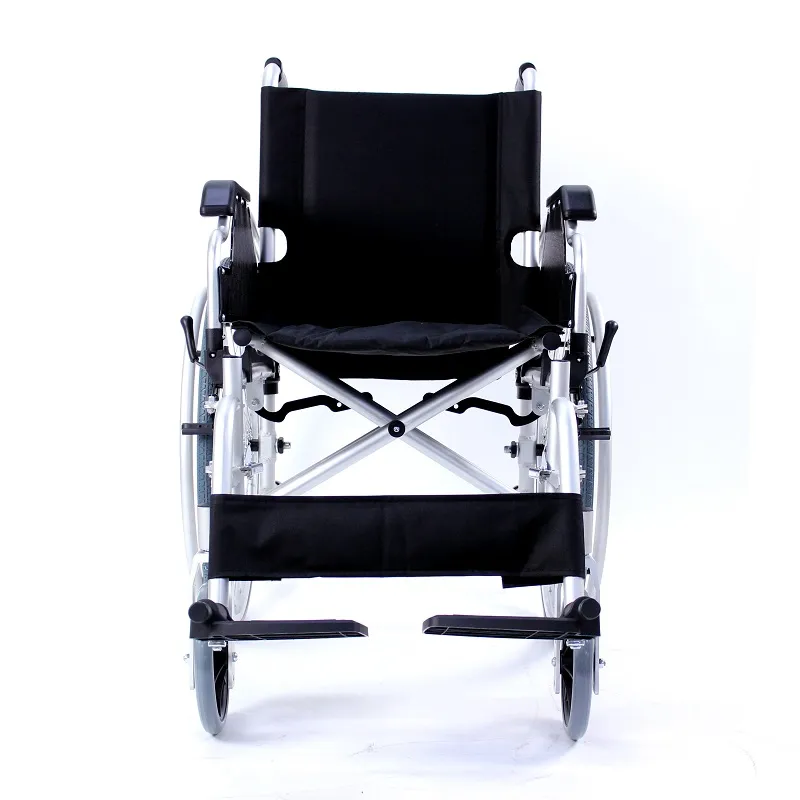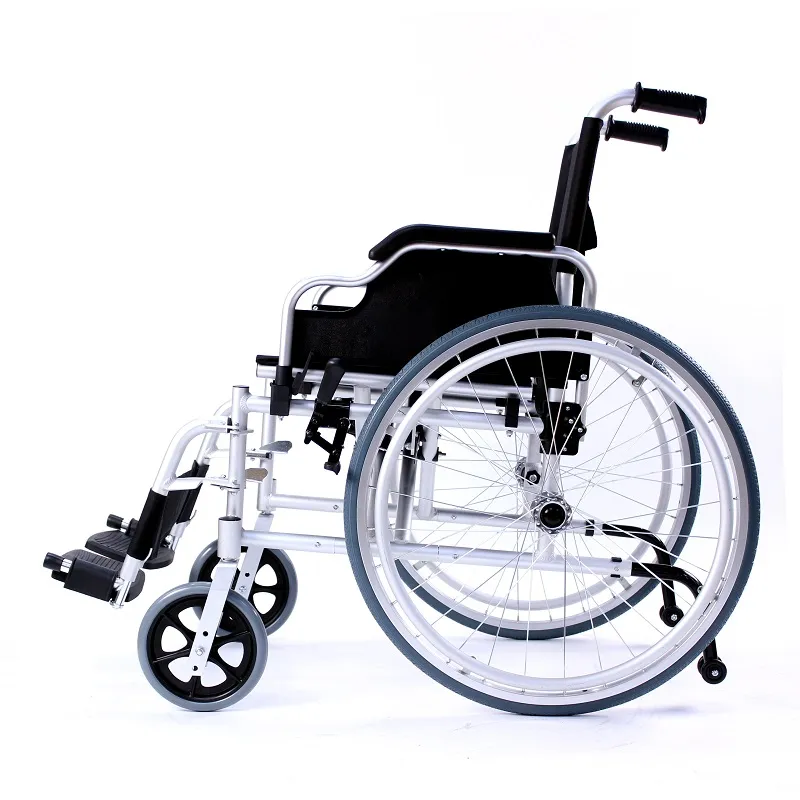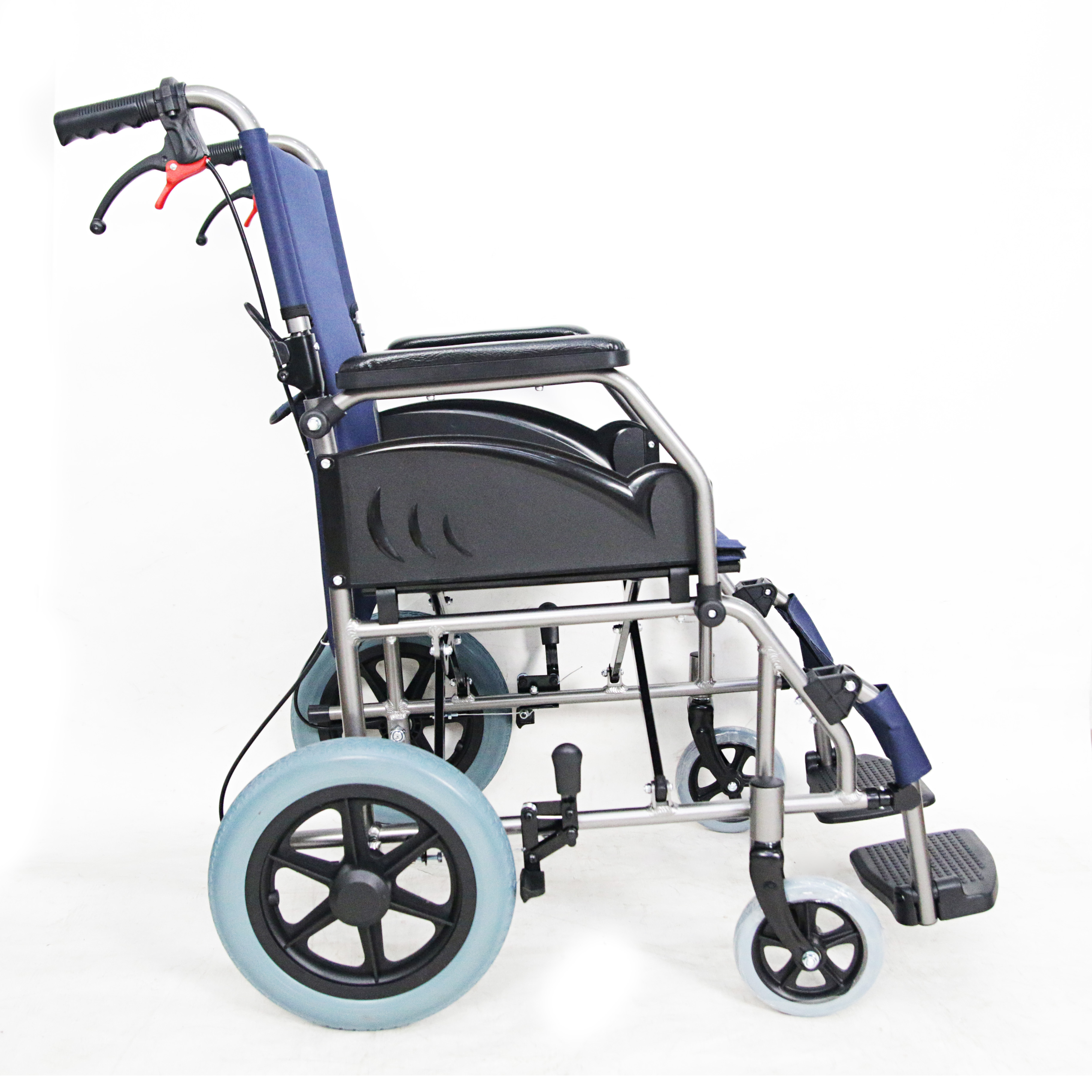Manual wheelchairs have always played an irreplaceable role in the medical device and mobility assistive device market. From hospitals to homes, from rehabilitation centers to long-term care facilities, they serve a wide range of people with mobility impairments with their simple structure, low cost, and intuitive operation.
However, in countless user and caregiver feedback, one question recurred: "Are manual wheelchairs with larger wheels easier to push?"
This may sound like common sense. Some believe larger wheels roll more smoothly; others point out that heavier wheels make them more difficult to maneuver. Even rehabilitation therapists suggest that manual wheelchairs with small or medium wheels are more suitable for indoor use.
This article addresses this question, drawing on the principles of engineering, physics, and biomechanics, and combining user experiences from different scenarios, to comprehensively analyze the true relationship between wheel size and manual wheelchair propulsion efficiency. This effort aims to dispel some of the "intuitive misconceptions" about wheelchair design and help users and caregivers make more informed choices.

The Basic Structure of Manual Wheelchair Wheels: Front vs. Rear Wheels
Before discussing wheel diameter, we must first clarify that manual wheelchair wheels are generally categorized as large (rear) and small (front).
1. Large (rear) wheels: Typically between 22 and 26 inches in diameter, they provide primary propulsion and weight-bearing functions. Most manual wheelchairs are user-propelled, with rear wheels equipped with push rings for the user to propel with their palms.
2. Small (front) wheels: Typically between 4 and 8 inches in diameter, they provide steering and auxiliary support. The front wheels rotate 360 degrees, enhancing turning maneuverability.
This article discusses the effect of rear wheel size changes on the overall propulsion performance of manual wheelchairs, encompassing both the self-propelled and the wheelchair-pushing scenario.
Bigger wheels, lower rolling resistance: The physical principle
From a purely structural mechanics perspective, larger wheels do offer a certain propulsion advantage. This phenomenon stems primarily from the "rolling resistance theory."
1. Rolling Resistance and Wheel Diameter Relationship
Rolling resistance is the reaction force on a wheel as it rolls on the ground. Its formula is roughly: Fr ≈ (C × W) / R, where:
· Fr: Rolling resistance
· C: Contact resistance coefficient between the ground and the tire
· W: Total weight of the wheelchair and user
· R: Wheel radius
As can be seen from the formula, the larger the wheel diameter R, the smaller the rolling resistance Fr. This means that, under the same conditions, larger wheels are more likely to overcome ground friction, making the wheelchair move more easily and smoothly.
2. The greater the off-road and obstacle, the more significant the advantage of larger wheels
Larger wheels make it easier to negotiate obstacles such as small steps, gaps, tile drops, carpets, and curbs. This advantage applies not only to those who push themselves but also greatly facilitates those who push.

The Impact of Manual Wheelchair Wheel Size on Usage
While the theory that "larger wheels are easier to push" seems valid, in reality, the conclusion is far from simple. Whether the wheel size is appropriate should be evaluated based on a comprehensive evaluation of factors, including the usage scenario, the pusher's physical strength, and surface conditions.
1. Indoor Use: Small Wheels Offer More Maneuverability
In confined indoor environments (such as home bathrooms and hospital wards):
· Rear-wheeled wheelchairs with small wheels (12-16 inches) are generally narrower and lighter, making them suitable for frequent maneuvers such as turning and U-turns.
· Larger wheels take up more space and have a larger turning radius, which can reduce efficiency.
· The surface is generally flat and smooth, resulting in less noticeable differences in rolling resistance.
Conclusion: In indoor environments with limited space and a flat surface, small-wheeled manual wheelchairs are easier to push.
2. Outdoor Use: Larger Wheels Offer Less Effort
In outdoor use (such as parkways, cobblestone paths, and slopes):
· Larger wheels can easily navigate small obstacles.
· When the tires are adequately inflated, their elastic shock absorption is significantly better than that of smaller wheels.
· Especially on unpaved surfaces, larger wheelchairs offer significantly less effort to push.
Conclusion: For frequent outdoor travelers, large-wheeled manual wheelchairs offer smoother pushing.

Wheelchair User's Physical Condition: Can the Propelling Ring Be Effectively Used?
For self-propelled users, the ability to effectively propel a manual wheelchair is closely related to wheel size, center of gravity design, and seat height.
1. Advantages of Large Wheels with a Propelling Ring
Large wheels typically come with a propelling ring, allowing the user to naturally grip and apply force with both hands to propel the wheelchair forward.
· Moderate Palm Angle of Force: The propelling ring is positioned appropriately for the shoulder and wrist angle, reducing muscle strain.
· Low Continuous Pushing Resistance: Large wheels, combined with inertia, are more likely to maintain continuous forward motion.
2. Low-Profile Small Wheels Are Not Suitable for Self-Propulsion
Some manual wheelchairs with small rear wheels (such as companion wheelchairs) lack a propelling ring or have a low propelling angle, making them unsuitable for self-propelling.
Conclusion: For users who wish to propel themselves, a large wheel with a propelling ring is essential. Manual wheelchairs with small wheels are more suitable for caregiver propulsion.
The Relationship Between Weight and Wheel Diameter: Large wheels can make the wheelchair heavier and more difficult to push
In real-world usage, an often-overlooked variable is that larger wheels can also increase the overall weight of the wheelchair. This is particularly true for the following two types of manual wheelchairs:
· Reinforced large wheelchairs: To ensure weight support and stability, these large wheels feature heavier rims and steel frames.
· Non-folding large wheelchairs: Designed for long-term outdoor use, they typically weigh 18-25 kg or more.
This increased weight can place additional strain on the caregiver, especially when pushing a wheelchair uphill or on high-friction surfaces like carpet.
Thus, even large wheels can offset the pushing advantage if the overall structure is bulky and the wheelchair is wide.

User Feedback: Pushing experience depends on more than just wheel size
Multiple user surveys have shown that whether a wheelchair is "easy to push" isn't solely determined by wheel diameter, but also by the following factors:
Factors | Impact Explanation |
| Tire material | Pneumatic tires are more flexible and less tiring than solid tires, with lower friction |
| Bearing quality | High-precision bearings rotate more smoothly, preventing jamming |
| Surface conditions | Wet, muddy, and gravelly surfaces create significant resistance for small wheels |
| Pusher height/strength | Unsuitable body types may result in a difficult pushing angle |
| Wheelchair maintenance | Wheelchairs that have not been cleaned or lack lubrication for a long time are more difficult to push |
How to choose the right wheel diameter for a manual wheelchair?
✅ Large-wheeled manual wheelchairs are suitable for:
· Users with partial or full upper limb strength who prefer self-propelling;
· Frequently walking or commuting outdoors;
· Living in a home with many steps and slopes.
✅ Small-wheeled manual wheelchairs are suitable for:
· Unable to self-propelle and requiring a caregiver to push the wheelchair at all times;
· Living in a cramped environment and requiring frequent turns and maneuvers;
· Primarily used on flat indoor floors with short travel distances.
Wheel size does not guarantee absolute ease of pushing; adaptability is key
Back to the title: "Are wheelchairs with larger wheels easier to push?"
The answer is: Under certain conditions, yes. Especially for outdoor use, frequent pushing, and complex surfaces, large wheels offer a physical advantage of being "easier to push" due to their low rolling resistance, strong obstacle-crossing capabilities, and smooth inertial propulsion.
However, this is not absolute. When using a manual wheelchair in a small indoor space, at a bedside in a hospital ward, or for care purposes, the lightness, flexibility, and compactness of a small wheelchair can actually offer practical advantages.
In addition, the wheelchair's overall structure, weight distribution, bearings, materials, and tire type all determine the ultimate pushing experience.
Common Manual Wheelchair Wheel Sizes and Suitable Applications Comparison Table
Rear wheel diameter (inches) | Applicable Environments | Facilitator | Advantages | Disadvantages |
| 12-16 inches | Indoor/Short-Distance Use | Caregiver | Flexible turning, lightweight, and foldable | Difficult to propel, unsuitable for complex terrain |
| 20-22 inches | Comprehensive Use | User/Caregiver | Self-propelled, suitable for both indoor and outdoor use | Taken up a bit of space |
| 24-26 inches | Outdoor/Medium-Long Distance Use | User | Easy rolling, strong obstacle-crossing capability, and high autonomy | Higher cost, heavy weight, large turning radius |
Tip: Manual wheelchairs aren't a one-size-fits-all product. When choosing a manual wheelchair, consider multiple factors, including frequency of use, location, user's physical condition, whether the wheelchair is self-propelled, and the strength of the caregiver. Rather than asking, "Are larger wheels better?", it's better to ask, "Which wheel size best suits my lifestyle?"
What product lines can be supplied with OEM customization?
Most of our product lines, including electric wheelchairs, hospital beds, commode chairs, rollers, and walkers, are available for OEM or ODM production. Clients can specify frame color, logo branding, packaging, and even component upgrades.
We offer quotes upon request and provide bulk order discounts. As a China-based medical factory, we ensure fast lead times and full compliance with ISO and CE standards.










